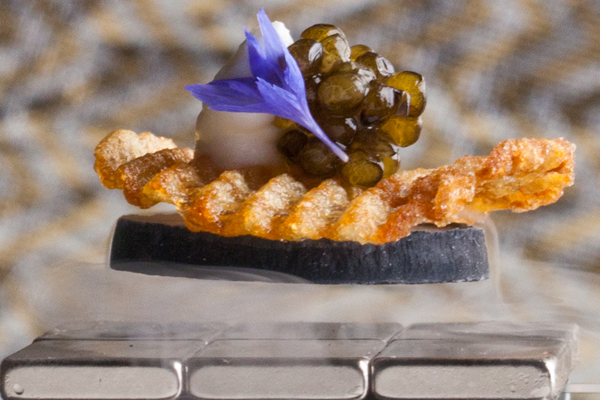Long seen as a luxury reserved for the rich and famous, an exotic delicacy on Asian menus or a New Year’s Eve treat, roe is becoming more accessible on restaurant menus — and chefs say diners are eating it up.
“It used to just be caviar or bust,” chef Victor Albisu said of diners' growing interest in roe. “Nowadays, people are much more food smart. They are looking for the next food flavor.”
The former executive chef at BLT Steak, Albisu has long used fish roe on his menus in everything from ceviche and crudo to eggs and salads. For his soon-to-open Del Campo, a South American grill in Washington, D.C., Albisu has created a charred radish salad with a brown butter, trout roe and citrus vinaigrette.
RELATED
• Restaurants work to increase servers' seafood knowledge
• Chef discusses challenges, rewards of fresh seafood
• Seafood Trends at NRN.com

“I’m a big proponent of using fish roe … I enjoy pairing it with all kinds of different things,” he said. “I find the texture interesting, the flavor elevating.”
So does John Critchley, chef at Urbana in Washington, D.C. “It’s just like truffles or any kind of unique and exotic ingredient,” he said. “Caviar itself has a great texture; it pops with fresh salty seafood in your mouth.”
Critchley uses caviar and roe as a fresh way to enhance flavors in dishes such as his Maine lobster pappardelle. Instead of adding pounds of butter he adds lobster roe to create a thicker, creamier and more intense lobster sauce. “It makes it richer without adding a lot of butter, [and it] turns the sauce bright red,” he noted.
For Justin Smillie, executive chef of Il Buco Alimentari e Vineria in New York’s NoHo neighborhood, using roe is part of the restaurant's efforts in nose-to-tail cooking. “All of these products are just an extension of the whole animal,” said Smillie. “Using roe/caviar is a logical extension of our already existing practice."

Smillie has been using bottarga, or cured roe, in his dishes since the restaurant opened 18 months ago. Currently, bottarga appears in two dishes: a spaghetti entrée and Insalata di Bottarga, an appetizer of Brussels sprout petals, radish, onion and celery.
A variety of caviars also appears on the menu of Il Buco Alimentari e Vineria. The restaurant is currently featuring trout caviar as part of the Hamachi Crudo.
At Tulio in downtown Seattle, chef Walter Pisano is stepping out of his comfort zone and using caviar and roe to add something unexpected to the menu. “We’re Italian. I’m not trying to do the fusion thing,” he said.
Pisano currently has on his menu an ahi tuna dish with sautéed Tuscan kale, pickled raisins, breadcrumbs and a side of tobiko, or flying fish roe. “I was really intimidated by the tobiko," he noted. "I stepped out of the box, going to Japanese roe.”
Diners' response has been so positive that Pisano says he may try the roe in another dish, perhaps pasta, next.
Meanwhile, chef Anthony Martin of Tru in Chicago is focused on the luxury of caviar and in his unique presentation of the different varieties. “Caviar is a luxury ingredient, so it fits with the image at Tru,” he said.
True to that image, Martin added the Coral Caviar to his menu two years ago. The dish features a large, bright-red coral replica with abalone shells resting in the branches, each holding different types of caviar. Since adding the item to menu caviar sales have jumped 1,000 percent, said Martin.
Last year, Martin added another show-stopper: the Levitating Caviar Amuse, a golden potato chip with reserve Kaluga caviar and crème fraiche that “floats” atop a tower-like serving platter. He serves the dish complimentary to guests on special occasions.
As for the cost of caviar and roe, which has a reputation for being out of reach for the average diner, many chefs are choosing to incorporate inexpensive varieties, such as tobiko, or offering several options in a range of prices.
Martin says his Coral Caviar has a starting price of $12 for salmon, trout and flying fish roe, and can goes as high as a guest would like.
Though lobster roe is quite expensive compared to other varieties, chef Critchley says it’s worth it. “The benefit of using it — the intense flavor — is much more important [than the cost].”





